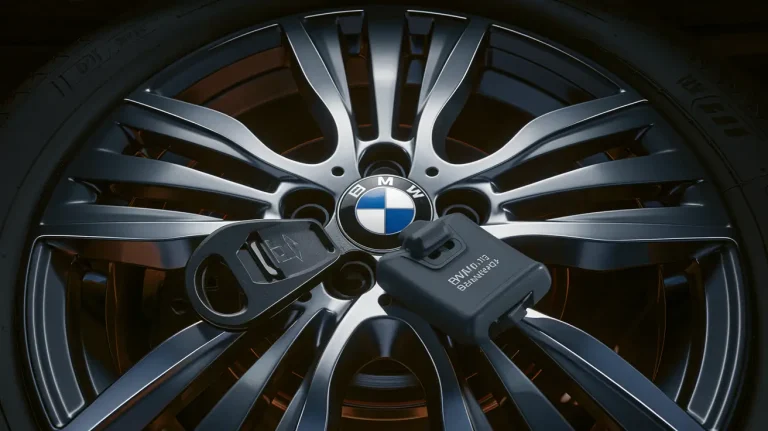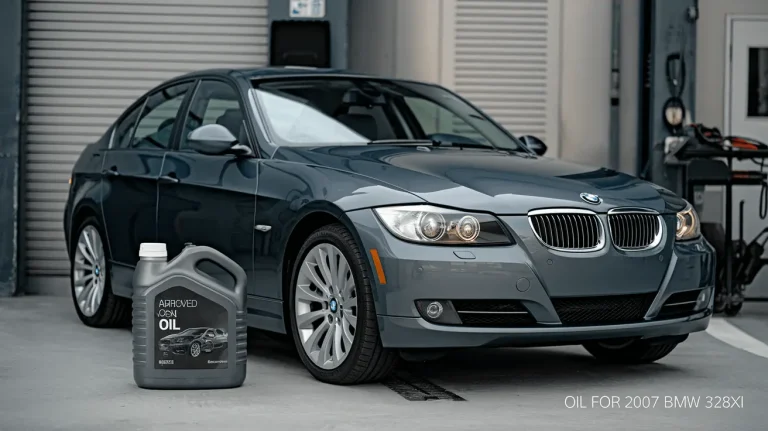Demystifying BMW’s Infamous Warning Light
The appearance of a bright yellow warning indicator featuring an exclamation point inside a triangle on the dashboard is enough to put any BMW owner on high alert. This enigmatic symbol could signify anything from a routine maintenance reminder to a serious mechanical fault.
To help shed some light, this comprehensive guide will explore the origins of BMW’s iconic warning symbol, decode what it’s trying to tell drivers, and provide actionable solutions to diagnose and resolve the underlying issue. Follow along to demystify one of the most notorious lights in BMW ownership.
What Does BMW’s Warning Light Mean?
Officially designated the “General Caution Warning Light” in BMW models, the triangular caution symbol with an exclamation point is intended as a catch-all visual cue to draw the driver’s attention to a developing condition or existing fault within the vehicle.
- The warning indicator is not associated with any single fault. Instead, it alerts drivers to one of several possible issues ranging from minor to major:
- Routine vehicle service reminders
- Tire pressure monitoring warnings
- Active check control messages
- ABS control module faults
- Its purpose is to prompt drivers to investigate the exact cause through on-board messaging systems and diagnostics procedures.
When this nagging neon shape makes an appearance, don’t panic. Simply read on to decode the meaning and troubleshoot the fault.
Most Common Causes of BMW’s Warning Light
While the origins can vary, there are four prevalent issues that trigger BMW’s warning light more frequently than others:
1. Scheduled Vehicle Service
One of the most common and least threatening reasons you may see this indicator light up is when routine service is due on one or more of the vehicle’s components or fluid systems.
- BMW has built in service interval reminders as maintenance milestones approach, such as:
- Oil and filter changes
- Brake fluid flushes
- Vehicle inspections
- Check engine diagnostics
- Safety and feature software updates
- This serves as a friendly notice to schedule appointments for preventative servicing to keep BMWs running at peak efficiency.
2. Tire Pressure Monitoring
Another benign source of the caution light is BMW’s built-in Tire Pressure Monitoring System (TPMS).
- TPMS uses sensors mounted inside each wheel to continually measure tire inflation pressures.
- Readings display real-time in the instrument cluster.
- If pressure drops 25% below vehicle specifications in one or more tires, the warning light activates.
- This indicates danger of blowouts, reduced braking performance, wheel damage and other safety hazards linked to underinflated tires.
- Low pressures trigger the light as a precaution until tires are refilled to placard limits.
3. Active Check Control Messages
The check control system serves as BMW’s on-board fault code library with the ability to store over 10,000 recorded vehicle faults.
- Faults are tagged by the system with priority ratings from green/low priority up to red/extremely urgent.
- When new fault codes register, or existing faults escalate in urgency, BMW’s warning indicator illuminates to prompt investigation via the check control messaging system.
- Accessing and deciphering check control messages is key to isolating the specific mechanical or electrical issues afflicting the vehicle.
4. ABS Control Module Malfunctions
The ABS brake control module oversees operaion of the entire Anti-lock Braking System (ABS) across all four wheels.
- It monitors wheel speed sensors and controls brake fluid pressure to prevent lockup.
- Faulty wheel speed sensors or bad ABS controller wiring are among the most prevalent causes of CEL illumination across BMW models.
- These ABS faults activate the general caution light in tandem until the root issue is resolved.
Now that you’re familiar with the origins of this troublesome triangle, let’s explore solutions.
How to Diagnose Issues Causing the Warning
When BMW’s alert triangle first appears, don’t panic. Follow these systematic troubleshooting steps to get to the root cause of the warning:
Access Check Control Message System
- Turn vehicle ignition to position two (before starting engine)
- Navigate to “Vehicle Info” menu
- Select “Check Control Messages”
- Assess any fault codes or warnings
- This critical step will reveal stored fault codes the caution light is referring to so issues can be properly diagnosed.
Check Tire Pressures
- Locate tire placard on driver’s door jamb listing pressure specifications
- Use accurate pressure gauge to measure inflation of all tires while cold
- Refill any underinflated tires to placard limits using a portable inflator or gas station air pump
This allows you to rule out TPMS warnings as the culprit, isolating the issue to more complex faults storing codes in the check control system.
Inspect ABS Components
Given their tendency to trigger the general warning light, visually inspect the ABS system if tire pressures verify properly inflated across all four wheels:
- Check connector cables to each wheel speed sensor for corrosion or loose connections
- Remove and reinstall each sensor to refresh positioning
- Clear any ABS fault codes and retest system operation
Thorough visual, electronic, and functional checks of the ABS system can help isolate or rule out faulting components triggering the light.
How to Reset BMW Check Control and Warning Lights
The proper repair procedures to reset lights will vary depending on the root cause:
For Service Reminders:
- Complete the necessary service procedure like an oil change
- Reset the CBS service interval in the vehicle computer’s system settings
- This will clear the reminder and switch off the warning light
For Active Fault Codes:
- Repair the component or system causing any active check control fault codes
- Use a diagnostic scan tool to clear all inactive and active control messages
- With faults remedied and codes cleared, the light will reset
For ABS Issues:
- Replace or repair faulty ABS wheel sensors
- Clear any ABS fault codes and confirm ABS operation status is normal
- Once all ABS issues resolve, the warning light will power down
In some cases, the system may require a diagnostic computer reset if the light fails to deactivate after servicing or repairs. BMW service centers can perform this task quickly during a shop visit.
Seeing Persistent Warning Lights? Time to Visit BMW Service
While this guide can help troubleshoot and reset some origins of the check control alert, if the warning light persists despite best efforts, professional service is likely required to fully diagnose and repair the underlying mechanical or electrical issue.
- BMW’s intricate electronics and notorious reliability of showing faults well before mechanical degradation make it essential to follow through on check control alerts.
- Continuing to operate with an active fault risks compounding repairs down the road.
- Factory-trained BMW technicians have access to advanced computer diagnostics to rapidly trace warning lights back to malfunctioning components.
- Parts needing replacement also benefit from dealership OEM components meeting strict engineering specifications for safety and performance.
If you’ve followed all troubleshooting guidance herein to no avail, schedule service at authorized BMW repair centers to determine next steps receiving the best care for your ultimate driving machine.
Maintain Your BMW to Keep the Light Off
BMWs give owners the benefit of early warning fault notifications unlike any other vehicle make – when properly maintained according to factory recommendations.
Follow this preventative maintenance checklist religiously to maximize performance, minimize major repairs, and avoid distracting warning symbols lighting up your dashboard:
Regular Oil Changes: Synthetic oils meeting BMW standards protect engine internals and keep additive levels optimized. Stretching changes leads to accelerated wear.
Annual Brake Fluid Flushes: Keeps system moisture-free. Moisture creates internal corrosion and boiling fluid temperatures.
OBDII Diagnostics Before Emissions Checks: Scan codes check all emissions sensors. Troubleshoot issues to avoid test failure.
Inspect Fuel Injectors Every 60k Miles: Cleans injector tips mitigating power loss and poor fuel economy.
Following factory maintenance schedules to the mile prevents 90% of major faults down the road – and keeps BMW’s bright caution beacons from turning your dash into a Christmas tree.
Conquer BMW Fault Codes with Confidence
In summary, BMW’s notorious check control warning light featuring an exclamation point serves a valuable purpose across BMW model generations – illuminating to inform drivers of possible faults needing prompt diagnosis and resolution.







